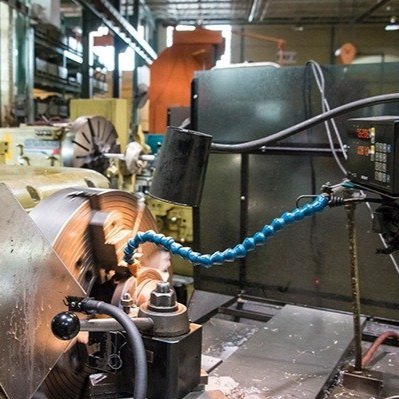How a Female Engineer Dredges the Deep Seabed
/This female engineer works offshore tracking underwater bombs and building islands, but when she’s not working, she’s sailing the world.
By Michelle Segrest, Navigate Content, Inc. - Reporting on the Industry
Original version published in World Pumps Magazine June 2019. Updated October 2019
Half the year, she lives and works on a 100-meter offshore vessel tracking underwater bombs, creating nautical charts, and building islands. When the work ends and all the men onboard go home to dry land, she moves to her floating home—a 12.5-meter sailboat—on which she and her husband sail the world. Last year, Emeline Veit spent only 10 days on dry land. She wouldn’t have it any other way.
The 26-year old engineer/hydrographic surveyor grew up in the south of France, in Sumene, a small village north of Montpellier. She spent her summers in Brittany with her parents and younger brother and knew she wanted live and work near the sea.
“I always I wanted to do something with the ocean,” she said. “I chose an engineering school in Brest because all the engineering specialties they were offering were linked to the ocean.”
Sometimes Veit is the only woman on board her office—a 35-crew offshore vessel. Her role is significant. While in the North Sea, it is her job to find unexploded ordinance (UXOs), which are explosive weapons like bombs, shells, grenades, land mines, naval mines, cluster munition, etc., that did not explode when they were employed and still pose a risk of detonation, sometimes many decades after they were used or discarded.
“My job depends on the project,” she said. “What I did in the North Sea is really special. I looked for UXOs, which are bombs leftover from the second World War. In the North Sea they are building many wind farms. On the cable routes and wind farm locations we must be sure we don’t have potential UXOs if they are piling for a wind turbine or dredging for the export cables. If they encounter a bomb it can destroy everything. The offshore wind power companies require that we look for them and remove them.”
In the North Sea, there are still many of them, she said. Experts report that there are approximately 1.6 million tons of these explosive remnants of war still buried below. A global scan is performed with a magnetometer, which provides a list of targets. Then Remotely Operated Vehicles (ROVs) are deployed. ROVs are underwater robots that are operated by two pilots onboard the main vessel. Veit is the navigator.
“It’s kind of like an underwater drone, but it’s huge—about 3 meters by 2 meters,” Veit explained. “I’m in charge of all the equipment on the ROV. I sit on the vessel bridge so I can see everything. The pilots are sitting in a room with screens that looks like an aircraft control room. We communicate through an intercom. I’m in charge of the positioning of the ROV and all the equipment on them. We first locate the precise target based on the readings. I give them the coordinates. It’s my job to create the charts.”
Onboard the offshore vessel all the subsea positioning is her responsibility. “GPS doesn’t work underwater,” she said. “It’s my job to locate what is underwater.”
Veit also uses these skills when she’s not working. Onboard her 12.5 sailboat home, Sea You, she is the navigator and performs all the passage plans as she and her husband, Felix Dupin, have sailed from Brittany across the English Channel, through the Bay of Biscay, along the Atlantic Spanish and Portuguese coastlines, into Africa, and across the Atlantic Ocean to Cabedelo, Brazil.
“I guess you could say I use these skills for work and for play, just in different ways.”
When a potential UXO is located, most of the time it is covered by sand. A dredge pump is used to begin the cleaning process. Sometimes a wheel is uncovered and sometimes a huge sea mine is discovered. High resolution photos are taken, and reports are written.
“Depending on the countries where we work there is different legislation required,” she explained. Each country’s UXO Navy Services are often in charge of demolitions. “We are in no danger at all,” she said. “Once it is clear, then we go and find another one. We are kind of like fishermen hunting for fish. We are fishing for bombs.”
When preparing to build a wind farm, there are cables between each wind turbine. A trench must be built in the sea bed for the cables, which are then covered with sand and rocks. With various tools, a 3D map can be made of the sea bed. Veit creates the charts and drawings.
Dupin has a similar job, but he works in different locations.
Earning Respect in the Male-Dominated Engineering Field
Veit said she feels comfortable on the large offshore vessel working with a team of mostly men. Sometimes there are one or two other women on board. But her work as a female engineer wasn’t as comfortable in the beginning when she mostly worked at onshore construction sites.
“When I began working I was working on dredging projects onshore,” she explained. “We would use dredges to deepen channels and build land reclamations, like the islands in Dubai and huge construction projects like airports. I did this for two years—mapping, drawing, and making calculations for these types of projects.”
When building an island, for example, first there must be a drawing, Veit explained. “Then, you have to get the sand from somewhere, so we use big dredges with large powerful pumps and engines able to suck sand, clay, silt, and gravel. On the side of the dredger one or two suction pipes descend to the bottom of the sea bed. It is comparable to a large hoover. It is trailed along the sea bed. In the head of these suction pipes, a system connected to a high-pressure water installation is capable of loosening the material on the sea bed. The material will be then sucked in the pipe and discharged in the hopper. When they are full, there are different ways of discharging the hopper. One of them is to go back to the shore and connect to a pipe, and then pump out a mixture of the material and water which goes all the way through the pipe to the land reclamation center. Then they bring in bulldozers and cranes and all kind of equipment and make an island.”
Veit calculated how much sand was dredged at sea in volume and how much was put on land in volume. The levels must meet the specifications of the design of the island or the channel.
“I would go to sea in a little boat and do a 3D mapping of the sea floor,” she explained. “I then made a drawing and computed all the volumes and then we could show the clients all the calculations. Projects like this can take one to six years or more to complete.”
Veit’s first assignments were in Korea and Africa, nations without many rights for women. Add to that being in a male-dominated profession, and this created challenges for the recently-graduated engineer.
“I was sent to the site in Gabon, Africa (on the western Atlantic coast) because they speak French there,” Veit said. “Being a young, white, female, engineer in Africa was difficult. I felt like I was always having to prove myself twice. I was on these construction sites with these big tough guys. I was out there taking measurements and having to collaborate with the men every day. It was a tough environment. I was only 22 years old.”
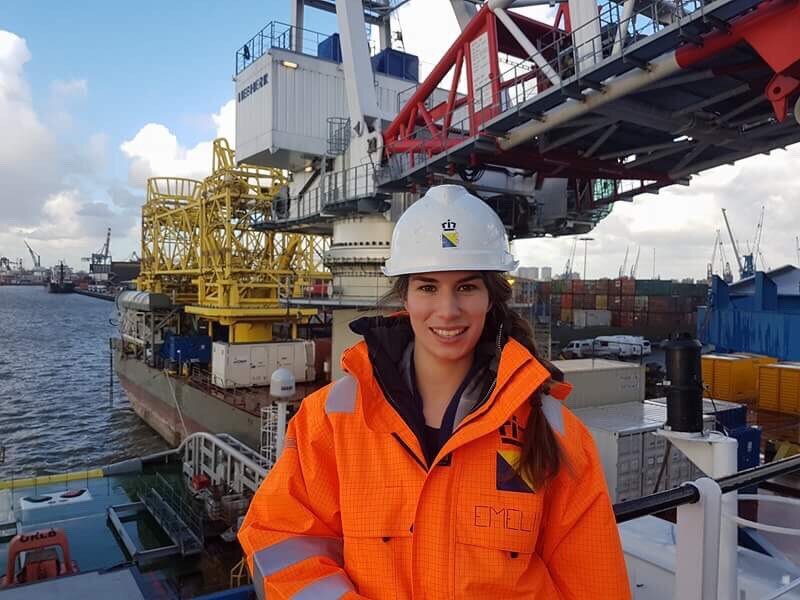
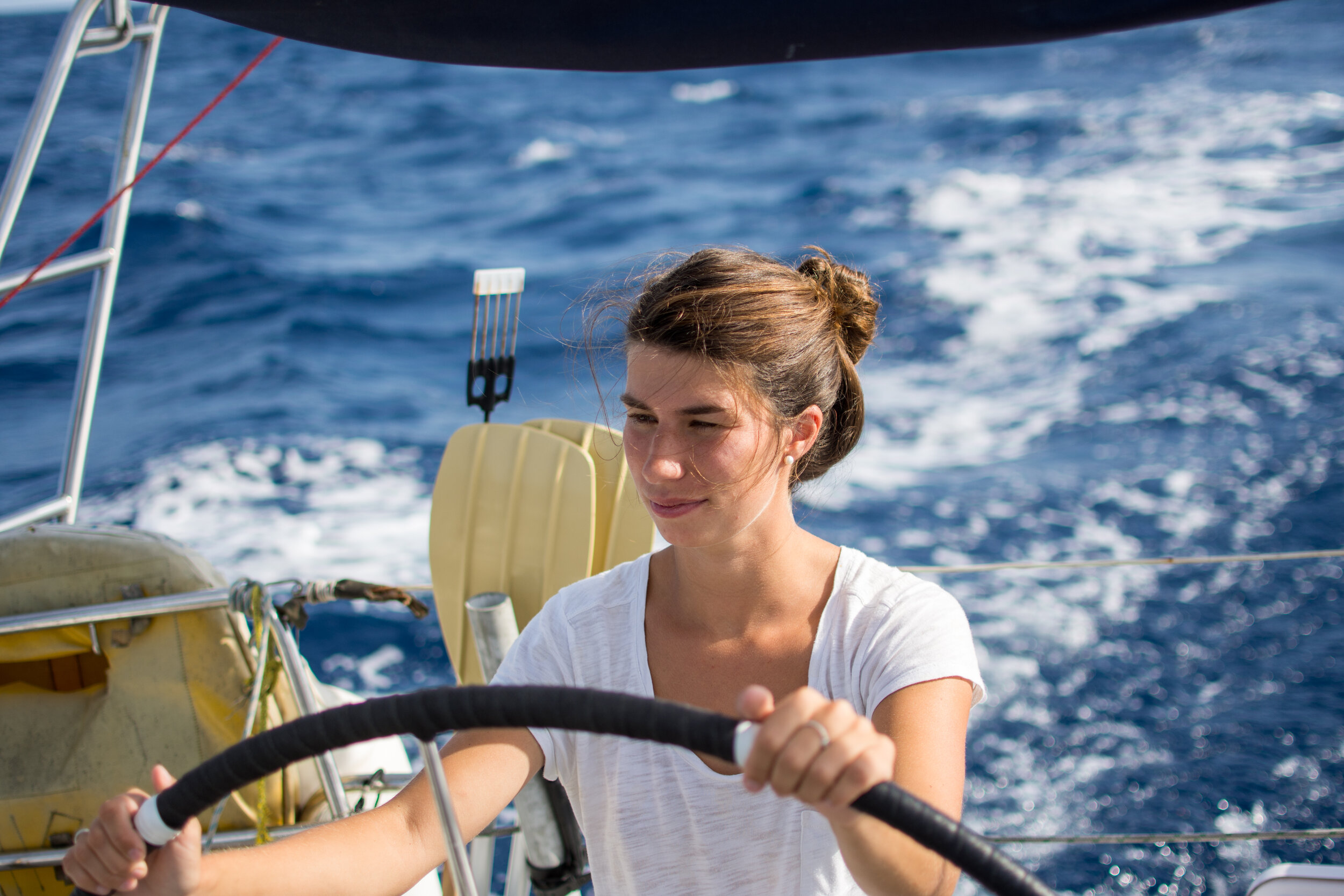
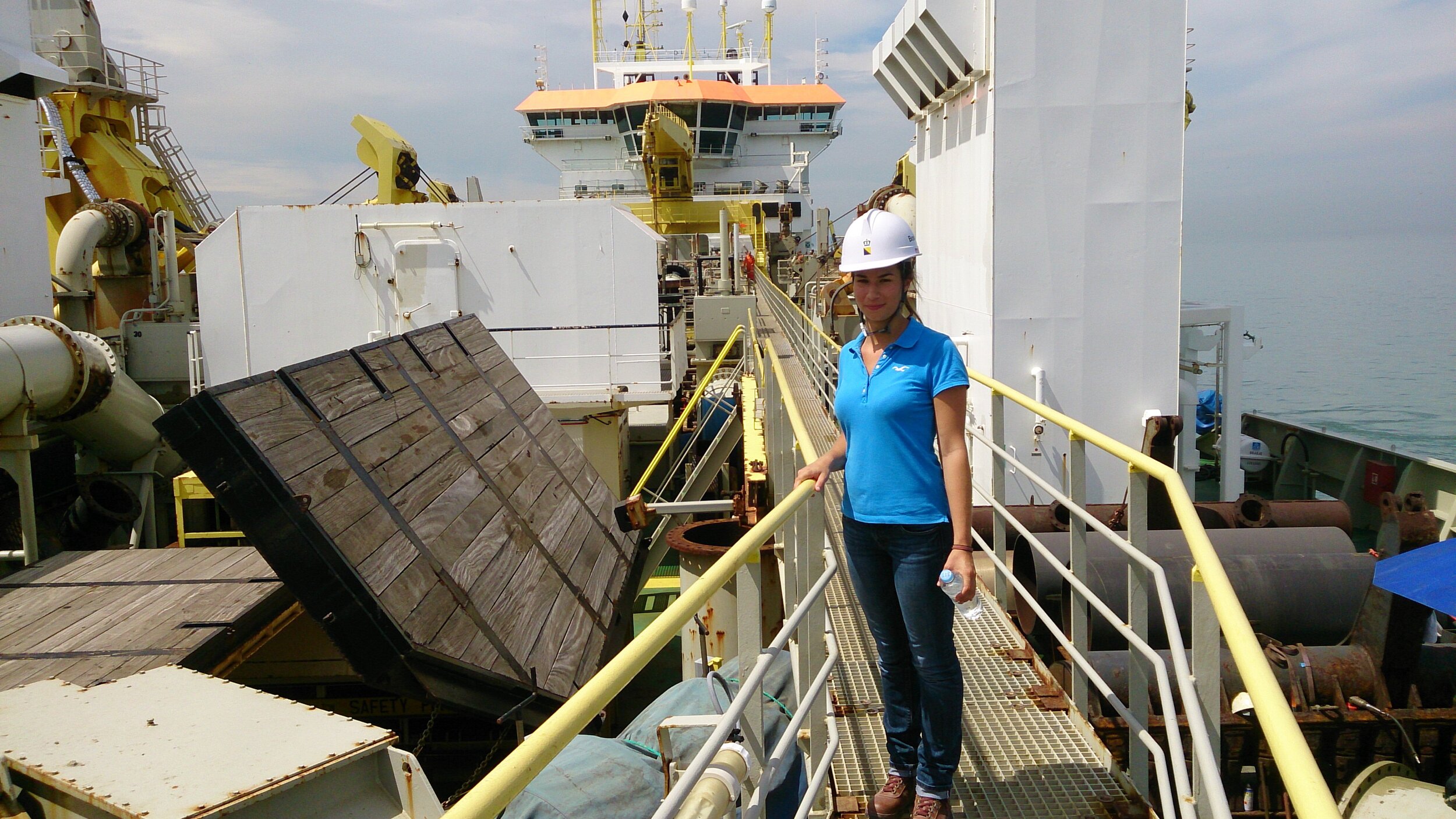
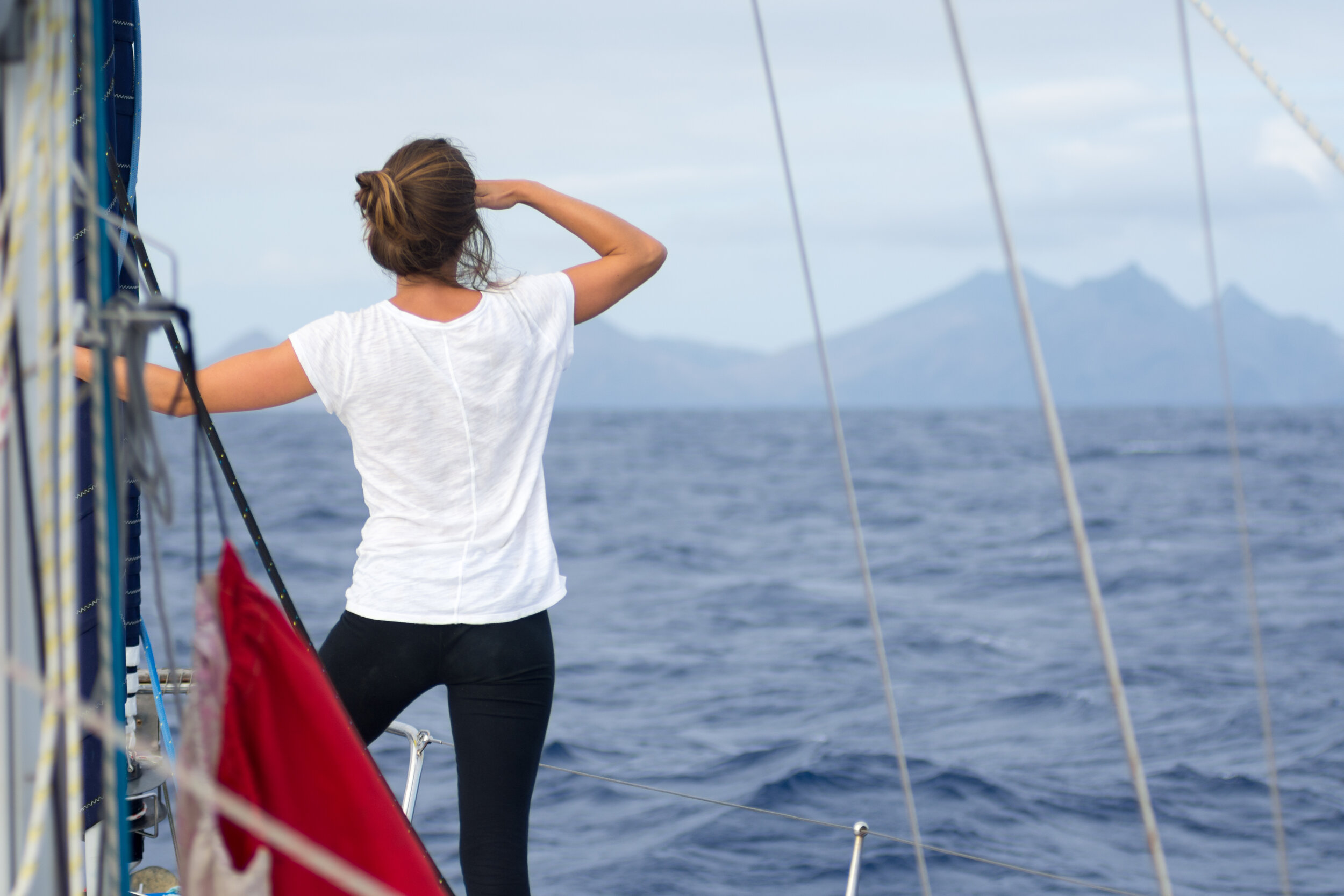
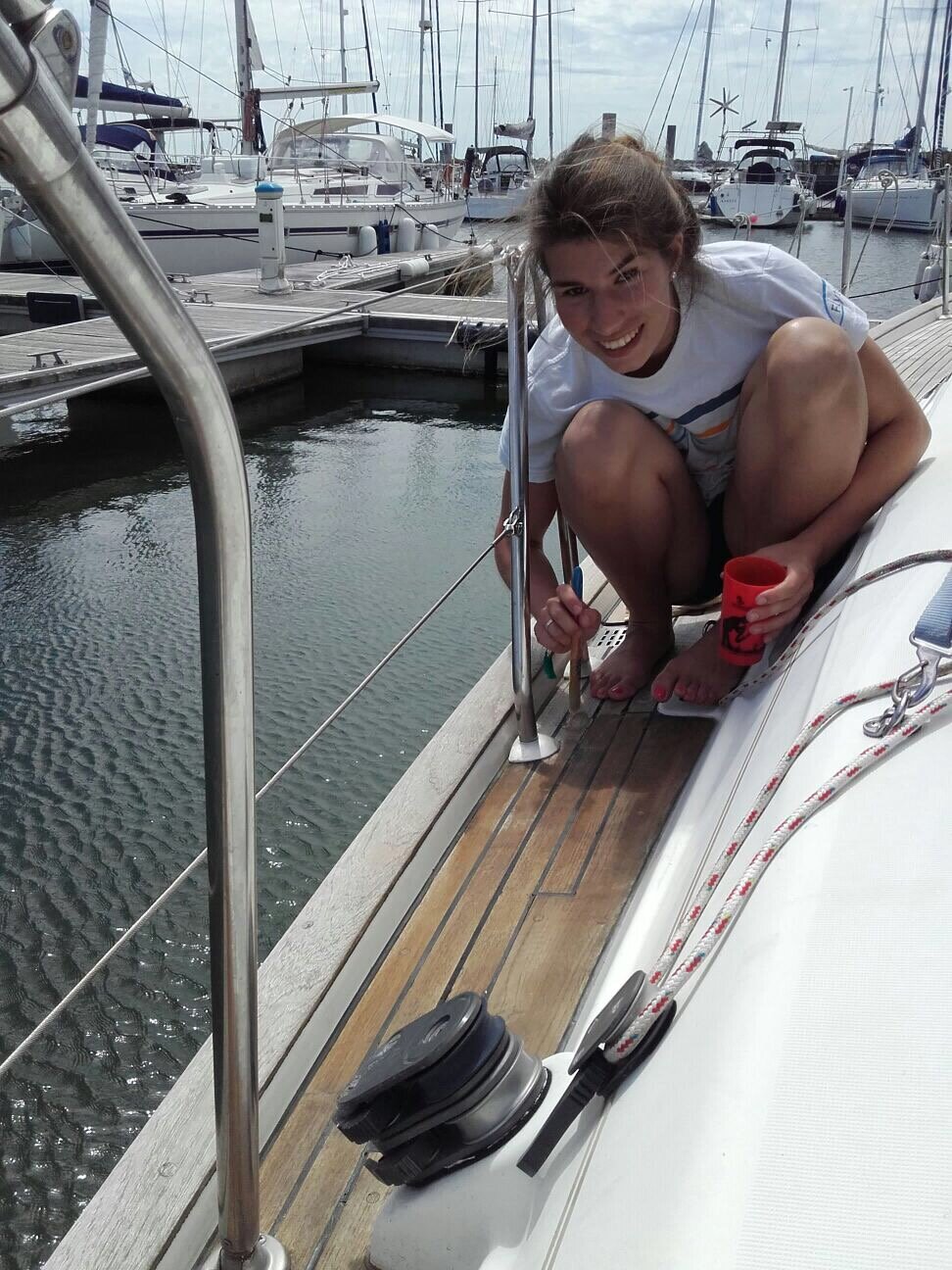
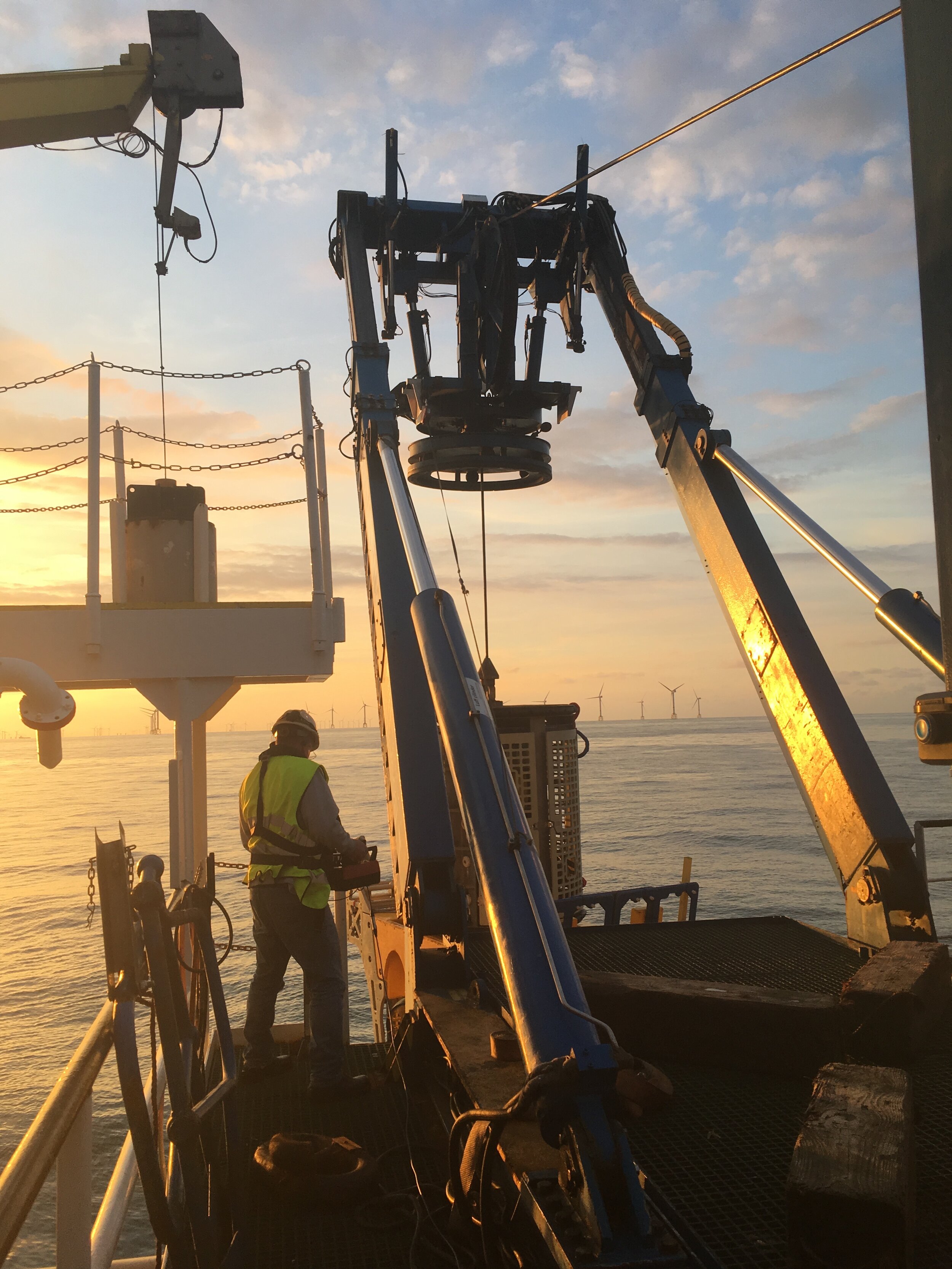
Life at Sea for this Female Engineeer
Now, Veit fits right in with the men onboard the offshore vessel. With experience and high-quality performance, she has earned their respect. In fact, they are impressed that she actually lives on a sailboat and crosses oceans in her tiny vessel.
“When I’m living on the huge 100-meter offshore vessel, it feels huge,” she said. “I had never gotten seasick until I crossed the Bay of Biscay with Felix on Sea You last fall. Sometimes I get tired of the sea and wish I was on land. But it’s only some days—mainly when it’s really cold, and I’m alone on the boat. One time I slipped on the pontoon between the sailboat and the pier. It was really cold. It’s days like that when I wish I was not on a boat. When you step out of your house, it’s unlikely you will fall into the freezing water.”
The lack of comfort on a boat is offset by the opportunity for constant travel and adventure.
“For me, it’s not really the motion or the space,” Veit said. “On the boat, I feel like we have enough space. It’s more a comfort thing. Sometimes everything is wet. You can’t have a real shower, and sometimes I miss having ice to put into a cold drink. Felix and I both do all the maintenance and work on the boat, so I get a lot of experience and know how to fix things. This impresses the guys on the offshore vessel, who think I’m crazy to live full time on a boat.”
When working onshore, Veit worked six weeks onsite and then had four weeks at home, which was on Sea You moored in Brittany, France. But then her father was diagnosed with an aggressive form of Cancer at the young age of 53. This is when she asked for a transfer to an offshore assignment so she could have four weeks at work and four weeks at home. Boskalis allowed her to do this, and she was able to be there for her father during all of his chemotherapy treatments.
“I wanted to stop working, but my Dad wanted me to live my life,” she said. “He is ok now, but I’m happy I was able to be there with him. It was important to my Dad that I keep working, but it was important to me to be there for him. My company offered me a way to do both. He is now doing a rare experiment in France that is working. At first the doctor told him he only had four months to live. I was on a project in Brunsbuttel, Germany on the Kiel Canal. My company transferred me immediately. They put me on the first flight the next morning and told me to take as much time as I wanted. This is how we dealt with Cancer as a family. We all fought together and decided we would not get destroyed by the illness. We agreed to continue what we were doing and enjoy every moment that we can. At times I didn’t want to leave him to go to work, but my dad said, ‘You have to leave, especially because I’m sick. We need to live our lives now because we never know what will happen.’”
That was two years ago. But the lessons learned from that tragic experience stay with the 26-year-old sailor/engineer.
When Veit and Dupin, who met at engineering graduate school in Brest, decided to sail the world on Sea You when they were not working, she began working as an independent contractor. Now, the boat is sitting on dry dock in Cabedelo, Brazil while both engineers returned to work for several months. Veit is currently working offshore in The Netherlands, while Dupin is working offshore in Egypt.
Veit said she can’t imagine not living and working at sea.
“I chose this job because it allows me to see the world, but not as a tourist,” she said. “When you are working in a different country, you really get to know the people and the culture. You live with them and work with them. I never worked in France. Even when I studied, I did internships in Korea, Canada, and Hawaii.”
Veit speaks French, English, Spanish, and is learning Portuguese. She hopes to one day sail to French Polynesia and New Zealand. “We are both very young and free to go where we want to go. This is why my parents pushed us to just go and do it now while we can.”
Veit doesn’t identify herself as a female engineer.
“When I’m working, I forget that I’m a female,” she said. “I identify with the guys and try to fit in. I’m not a girly-girl onboard, although the guys did give me a pink helmet, and I’m proud of it. I’m just part of the team. It was important in the beginning to show them that I was strong. I had to know a little more and be more confident. On the offshore vessel, I can speak about sailing and about boat maintenance—especially since I’ve crossed an ocean in a sailboat. I get some respect for that.”
For Veit, work life and regular life will always be connected to the sea and to seeing the world in unique ways.
“I always traveled with my parents—even when I was 3-years old,” she said. “We were always taking a backpack and going somewhere in the world. We were camping or hiking. We were never in resorts. Traveling and seeing the world was always normal for me. So why not travel with your house? It’s just a bigger backpack.”
Michelle Segrest is President of Navigate Content, Inc. and has been a professional journalist for more than three decades. She has specialized in creating content for the municipal and industrial processing industries since 2008. Contact her at michelle@navigatecontent.com
If you like this article about a female engineer dredging the deep sea, please PIN IT!
This page contains affiliate links. If you click on the product links and make a purchase, it allows me to make a small commission at no extra cost to you! Thank you for your support and I hope you find value in this content!















